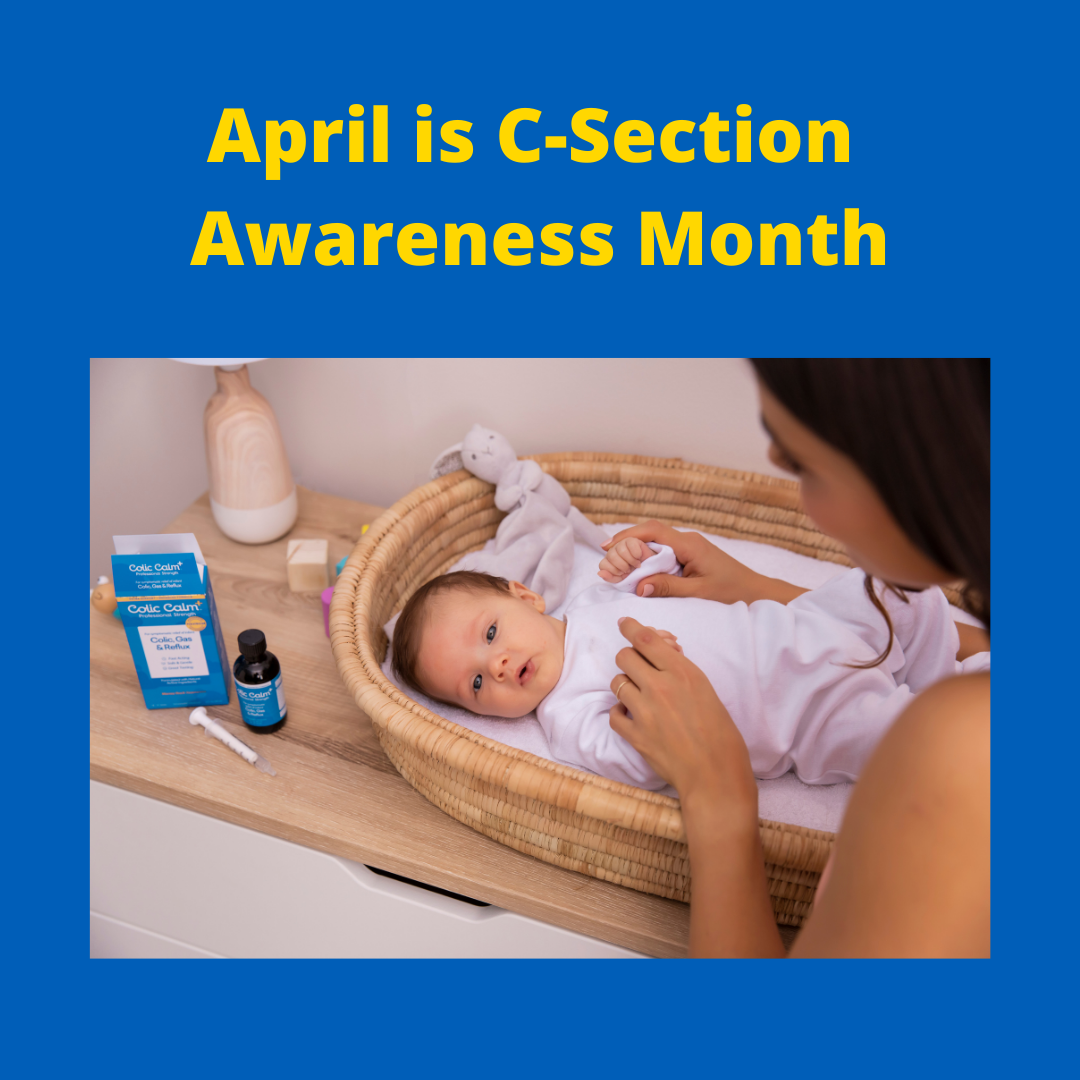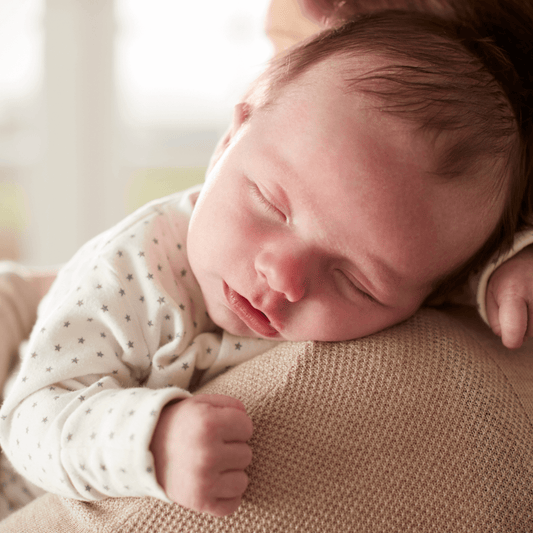
12 Postpartum Care Essentials for C-Sections
April is international C-section (or cesarean section) awareness month. A C-section is when a baby comes out through an incision made in the mother’s abdomen through to the uterus rather than the baby being born through the birth canal and delivered out the vagina. Both C-section and vaginal births are no small task. About one-third of all babies are born via C-section and to help bring more awareness and support to mothers who have had one, this article focuses on postpartum care essentials for C-sections. Next month, we’ll be posting a blog about our postpartum care essentials for vaginal deliveries.
If you have a C-section scheduled, you may be nervous about what to expect. Even if you’re not planning on having a cesarean birth, this information is still valuable to learn as emergency C-sections can occur. It’s important to be prepared for whichever delivery you end up having.
1. Postpartum Pads
For the first few days up to six weeks following the birth of your little one, you’ll want to have extra padding. Even if you have a C-section, there will be a lot of bleeding. Bleeding happens after any baby delivery to eliminate the blood from where the placenta was attached to the womb. Normal menstrual pads can typically be used after the first few days. We love these heavy absorbency, long length pads that are ideal for heavy leaks.
2. Postpartum underwear
After your C-section, it’s important to wear underwear that can easily be pulled up above the incision area. You'll also want to be sure that your underwear is stretchable, comfortable and breathable.
We love these high waisted C-section underwear that provide full coverage.
3. Pain Killers
Pain from your C-section usually spikes around 18 hours after delivery. This is typically when the pain medication and anesthesia wear off. Wihle you’re still at the hospital, you’ll be given a stronger pain relief medicine but by the time you are discharged you’ll only need non-prescription pain relief.
As you can imagine, dealing with postpartum pain while caring for a brand-new baby can prove to be difficult. Especially after a C-section, your wound will continue to feel sore and bruised for a few weeks. You’ll want to get ahead of the pain with a pain killer for at least 7-10 days after your C-section. We recommend this extra strength, quick release pain reliever.
4. Stool Softener
The mix of hormones and medication you receive can make things a little backed up. Often, we hear that more women are concerned about their first bowel movement after giving birth versus the actual labor and delivery portion! Since going to the bathroom just after having your baby can be painful in the beginning. Constipation can last for a few days and be very uncomfortable, we recommend this stool softener to gently soften stools.
5. Post-Pregnancy Vitamins
Post-pregnancy vitamins are just as important as pre-pregnancy vitamins were. When recovering from a C-section, a few important postpartum supplements are cod-liver oil, echinacea, vitamin C, vitamin D, bromelain, quercetin and rutin.
We love these postnatal vitamins that provide nutritional support for postpartum mothers.
6. Postpartum Tea
There are several key vitamins and nutrients that help with postpartum healing. We love this recovery tea that helps balance natural energy levels and provides your body with essential nutrients.
7. Postpartum Girdle
Chances are that if you’ve had a C-section, you may have to use a postpartum girdle or abdominal binder to aid in recovery. Women who have had vaginal deliveries also opt to use these too. For extra support of your abdomen and to assist with your body’s muscular and skeletal recovery, a postpartum girdle helps with extra support, protects your C-section incision and aids in boosting your self-confidence.
We love this girdle that is made specifically for C-section recovery. It includes soft steel ribs for optimum back support.
8. Silicon scar sheets
After having a C-section, you’re probably worried about the incision scar lingering around afterwards. Surprisingly, C-section scars are small. Most likely the incision will be made horizontally below the pubic hairline (so below where a bikini or low-rise clothing would sit). Healing your incision and helping the scare is just like any other incision or cut you experience.
Make sure that you’re caring for your scar and following the doctor’s orders. Typically, you’ll be instructed to not lift anything heavier than your baby so that you don’t disrupt the healing process. You will be able to shower normally but avoid bathtub and pool submersions. One recommendation that helps reduce the scaring is to use a silicone scar sheet. Scar sheets are silicon bandages that are made of thin and breathable fabric. We love these scar sheets that are clinically supported to reduce scars.
9. Scar Cream
a. Speaking of scar minimization or removal, scar cream is also helpful. If you want to further reduce the appearance of your scar, try a scar gel or cream alongside the silicon scar sheets. We love this brand that is clinically shown to improve the appearance of scars.
10. Lounge pants or high waisted leggings
Comfort is the name of the game after you’ve had a C-section. After your body has gone through trauma, you’ll want to keep it as comfortable as possible. One way to stay comfortable is by wearing lounge pants or high waisted leggings. We recommend these ones that have a button for closure and have soft fabric.
Draw-string pants and large T-shirts are also very popular. If it’s summertime or warm where you live, a dress is also an option. Whatever clothing makes you feel comfortable works, just be sure it doesn’t rub against the incision area.
11. Compression Socks
Maternity compression socks can help aid in C-section recovery. Directly after a C-section, your doctor will want to encourage blood flow with compression devices. Once you start moving around on your own, you’ll want to wear a pair of compression socks.
Compression socks support good blood flow in your legs when you’re not moving around much. Sitting for long periods of time, feeding your baby and holding him or her, can be hard on your body and lead to swelling in the feet and legs.
We love these maternity compression socks that are extra soft. They support reduced swelling and prevent varicose veins.
12. Heating Pad
A C-section is a major surgery, so recovery can take time and does come with a fair amount of discomfort. Help ease your pain by using a heating pad (set on low) and laid on your belly. We recommend this heating pad with personalized heat settings.
Of course, the list of postpartum care items could go on and on. There are several other healing techniques that we didn’t mention here. Whichever route you take on your postpartum C-section recovery journey, remember that taking care of yourself will be the best thing you can do for your newborn baby.




